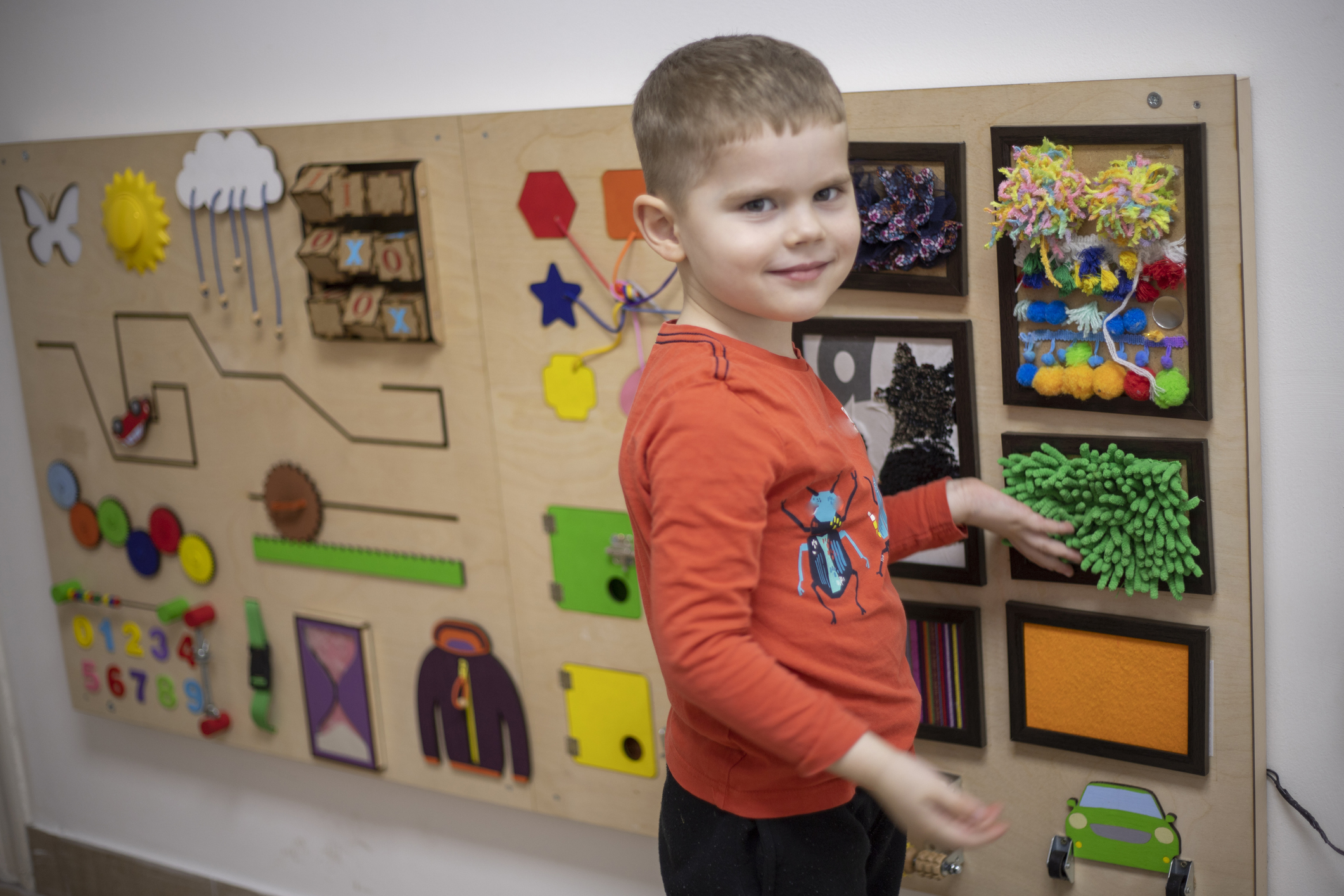In today’s educational landscape, it is becoming increasingly important to create inclusive and supportive learning environments that cater to the unique needs of every student. One crucial aspect of this is recognizing and addressing the impact of trauma on students’ lives. Trauma-informed classrooms aim to provide a safe and nurturing space where students who have experienced trauma can heal, grow, and thrive.
However, simply acknowledging trauma is not enough. To truly empower students in trauma-informed classrooms, their voices must be heard and valued. When students can express their thoughts, opinions, and experiences, they develop agency—a sense of control and ownership over their learning journey. This empowerment not only enhances their educational experiences but also fosters resilience in the face of adversity.
In this blog post, we will explore the importance of empowering students’ voices in trauma-informed classrooms and how it promotes agency and resilience. We will delve into the role of students’ voices in healing and growth, and discuss strategies that educators can implement to create an environment that encourages active student participation and decision-making.
Additionally, we will explore the concept of resilience within the context of trauma and discuss specific techniques for fostering resilience in students who have been exposed to traumatic experiences. We will explore the role of coping skills, positive attitudes and beliefs, and social and emotional learning in promoting resilience.
Furthermore, we will delve into the practical aspect of incorporating trauma-informed practices into the school system. This includes providing training for teachers and school staff to better understand and respond to the needs of traumatised students, establishing a trauma-informed school culture that prioritises students’ well-being, and collaborating with parents and the wider community to create a supportive network for students.
By empowering students’ voices and promoting agency and resilience in trauma-informed classrooms, we can create an educational environment where students feel valued, supported, and empowered to overcome the challenges that trauma presents. Join us as we explore the strategies and practices that can transform classrooms into spaces of healing, growth, and empowerment for all students.
Understanding Trauma-Informed Classrooms: The Basics
Trauma-informed classrooms are designed to create a safe and supportive learning environment for students who have experienced trauma. Understanding the basics of trauma-informed classrooms is crucial for educators to effectively address the needs of these students and promote their well-being. In this section, we will explore the fundamental principles and key components of trauma-informed classrooms.
What is Trauma?
To understand trauma-informed classrooms, it is essential to have a clear understanding of what trauma is. Trauma refers to an experience or event that is deeply distressing or disturbing, often causing long-lasting emotional and psychological effects. Traumatic experiences can vary widely, including but not limited to physical or emotional abuse, neglect, violence, natural disasters, or loss of a loved one.
The Impact of Trauma on Students
Trauma can have a profound impact on students’ academic, social, and emotional well-being. It can affect their ability to concentrate, regulate emotions, form positive relationships, and engage in learning. Understanding the specific challenges and behaviours associated with trauma is crucial for educators to provide appropriate support and create a trauma-informed classroom environment.
Core Principles of Trauma-Informed Classrooms
Trauma-informed classrooms are built on several core principles that guide educators in their approach to supporting traumatized students. These principles include:
- Safety: Creating a physically and emotionally safe environment where students feel secure and supported.
- Trustworthiness and Transparency: Building trusting relationships with students and being transparent in communication and decision-making processes.
- Choice, Collaboration, and Empowerment: Involving students in decision-making, providing choices, and empowering them to have control over their learning experiences.
- Cultural Sensitivity and Responsiveness: Recognizing and respecting the diverse cultural backgrounds and experiences of students when addressing trauma.
- Collaboration and Coordination: Collaborating with other professionals, such as counsellors or social workers, to provide comprehensive support for traumatized students.
Key Components of Trauma-Informed Classrooms
Trauma-informed classrooms incorporate various components to create an environment that supports traumatised students. These components include:
- Awareness and Education: Educating teachers and staff about the impact of trauma and equipping them with the knowledge and skills to support students effectively.
- Sensory Regulation: Implementing strategies to help students regulate their sensory experiences, such as providing calming spaces or implementing sensory breaks.
- Emotional Regulation: Teaching students strategies to manage and regulate their emotions, such as deep breathing exercises or mindfulness activities.
- Relationship Building: Fostering positive and trusting relationships between teachers and students, as well as peer-to-peer relationships, to create a supportive community within the classroom.
- Flexibility and Individualization: Recognizing that each student’s experience and response to trauma may differ and tailoring instructional approaches and support to meet their specific needs.
Understanding the basics of trauma-informed classrooms provides a foundation for educators to effectively support students who have experienced trauma. By creating a safe and supportive environment grounded in these principles and components, educators can lay the groundwork for empowering students’ voices and promoting agency and resilience in trauma-informed classrooms.
Importance of Empowering Students’ Voices in Trauma-Informed Classrooms
Empowering students’ voices in trauma-informed classrooms is crucial for their overall well-being and academic success. When students feel valued and have a sense of agency in their learning environment, it has a profound impact on their ability to heal from trauma, develop resilience, and thrive academically. In this section, we will explore why empowering students’ voices is essential in trauma-informed classrooms.
Validation of Experiences
Trauma can often leave students feeling isolated and unheard. By empowering their voices, educators validate their experiences, acknowledge their pain, and provide a space for them to express their emotions and thoughts. This validation helps students feel seen, understood, and supported, contributing to their healing process.
Building Self-Confidence and Self-Worth
Empowering students’ voices fosters a sense of self-confidence and self-worth. When students are encouraged to express their opinions, share their ideas, and participate actively in classroom discussions, they develop a belief in their abilities and strengths. This confidence extends beyond the classroom, positively impacting their overall self-esteem and resilience.
Cultivating a Sense of Ownership and Control
Empowering students’ voices gives them a sense of ownership and control over their learning journey. When students are actively involved in decision-making processes, such as setting goals, choosing topics of study, or providing input on classroom rules, they feel a greater sense of agency. This ownership and control enhance their engagement, motivation, and investment in their education.
Enhancing Communication and Social Skills
When students are provided opportunities to express their voices, they develop essential communication and social skills. By engaging in discussions, expressing their thoughts, and actively listening to their peers, students build effective communication skills. These skills not only benefit their academic pursuits but also contribute to their ability to form positive relationships and navigate social interactions.
Fostering Critical Thinking and Problem-Solving Skills
Empowering students’ voices promotes critical thinking and problem-solving skills. When students are encouraged to question, analyse, and evaluate information, they develop higher-order thinking skills. By actively participating in classroom discussions and engaging in collaborative activities, students learn to think critically, consider multiple perspectives, and develop innovative solutions to problems.
Strengthening Classroom Community
Empowering students’ voices creates a sense of belonging and strengthens the classroom community. When students feel that their voices are valued and respected, they are more likely to engage in positive interactions, support their peers, and contribute to a collaborative learning environment. This sense of community fosters a supportive and inclusive classroom culture, benefiting all students, especially those who have experienced trauma.
By empowering students’ voices in trauma-informed classrooms, educators create an environment that promotes healing, resilience, and academic success. Students who feel validated, confident, and in control of their learning journey are more likely to overcome the challenges of trauma and develop the skills necessary to thrive in both their academic and personal lives.
Strategies to Promote Agency in Trauma-Informed Classrooms
Promoting agency in trauma-informed classrooms is essential for empowering students and fostering their sense of control and ownership over their learning. By providing opportunities for students to make decisions, express their preferences, and actively participate in their educational journey, educators can support their healing process and promote resilience. In this section, we will explore effective strategies to promote agency in trauma-informed classrooms.
Creating a Safe and Supportive Environment
Creating a safe and supportive environment is the foundation for promoting agency in trauma-informed classrooms. Students need to feel physically and emotionally safe to express their voices and take risks in their learning. Educators can establish this environment by:
- Setting clear expectations and boundaries: Communicate classroom rules and expectations, ensuring students understand what is acceptable behaviour. This provides a sense of safety and predictability.
- Building positive relationships: Develop trusting relationships with students based on empathy, respect, and understanding. Show genuine interest in their lives and experiences, creating a safe space for open communication.
- Providing emotional support: Be responsive to students’ emotional needs, offering comfort, reassurance, and guidance when necessary. Create opportunities for students to discuss their feelings and emotions in a safe and non-judgmental environment.
Encouraging Participation and Decision-Making
Encouraging active participation and decision-making empowers students to have a voice in their learning process. By involving them in decision-making and valuing their contributions, educators can promote agency. Strategies to encourage participation and decision-making include:
- Student-led discussions: Allow students to lead discussions, facilitating meaningful conversations and encouraging them to express their thoughts and opinions.
- Choice in assignments and projects: Provide opportunities for students to choose topics, formats, or approaches for assignments and projects. This allows them to engage with their interests and preferences, increasing their investment in their work.
- Collaborative decision-making: Involve students in decision-making processes related to classroom rules, routines, and activities. Seek their input and consider their perspectives, empowering them to have a say in shaping their learning environment.
Building Trust and Positive Relationships
Building trust and positive relationships with students is crucial for promoting agency in trauma-informed classrooms. When students feel valued, respected, and supported, they are more likely to engage actively and take risks in their learning. Strategies to build trust and positive relationships include:
- Active listening: Practice active listening by giving students your full attention, demonstrating empathy, and validating their experiences and perspectives.
- Individualized support: Recognise and respond to the unique needs of each student, providing individualized support and guidance. This demonstrates your commitment to their growth and well-being.
- Regular check-ins: Schedule regular check-ins with students to discuss their progress, concerns, and goals. This shows that you value their input and are invested in their success.
Providing Autonomy and Ownership
Providing autonomy and ownership in the learning process empowers students to take control of their education. By giving them choices and opportunities for self-direction, educators can foster agency. Strategies to provide autonomy and ownership include:
- Flexible assignments: Offer options for students to demonstrate their understanding and skills through various formats or approaches. This allows them to showcase their strengths and preferences.
- Goal-setting: Involve students in setting goals for their learning, encouraging them to take ownership of their progress and growth. Help them establish achievable objectives and provide support in tracking their progress.
- Self-reflection and self-assessment: Encourage students to reflect on their learning and assess their progress. Provide tools and guidance for self-assessment, helping them develop self-awareness and metacognitive skills.
By implementing these strategies, educators can promote agency in trauma-informed classrooms, empowering students to take an active role in their education and fostering their resilience in the face of trauma.
Fostering Resilience in Students Exposed to Trauma
Fostering resilience in students who have been exposed to trauma is paramount in helping them overcome adversity and thrive academically and personally. Resilience is the ability to adapt and bounce back from challenging experiences, and it plays a crucial role in the healing process. In this section, we will explore strategies and techniques for fostering resilience in students exposed to trauma.
Understanding Resilience in the Context of Trauma
To foster resilience, it is important to have a clear understanding of resilience in the context of trauma. Resilience is not about erasing the impact of trauma but rather equipping students with the tools and skills to navigate and thrive despite their experiences. It involves building their capacity to cope with adversity, regulating emotions, and developing positive attitudes and beliefs about themselves and their future.
Teaching Coping Skills
Teaching coping skills is essential for fostering resilience in students exposed to trauma. By equipping them with effective strategies to manage stress, regulate emotions, and cope with difficult situations, educators can empower students to navigate challenges. Coping skills may include:
- Mindfulness and relaxation techniques: Teach students techniques such as deep breathing, meditation, or progressive muscle relaxation to help them calm their minds and bodies during times of stress.
- Emotional regulation strategies: Guide identifying and expressing emotions in healthy ways, such as journaling, art therapy, or engaging in physical activities.
- Problem-solving and decision-making skills: Teach students how to analyse problems, brainstorm solutions, and make informed decisions. This helps them develop a proactive approach to challenges they may face.
Promoting Positive Attitudes and Beliefs
Promoting positive attitudes and beliefs is key to building resilience in students impacted by trauma. By helping them develop a growth mindset and fostering a sense of hope and optimism, educators can nurture their belief in their abilities and resilience. Strategies to promote positive attitudes and beliefs include:
- Encouraging self-reflection and self-compassion: Help students develop a realistic and compassionate view of themselves by reflecting on their strengths, achievements, and progress. Encourage self-compassion and self-acceptance during challenging times.
- Recognizing and celebrating progress: Regularly acknowledge and celebrate students’ efforts, progress, and achievements. This builds their confidence and reinforces their belief in their ability to overcome obstacles.
- Promoting a growth mindset: Teach students about the power of a growth mindset, emphasizing that their abilities and intelligence can be developed through effort and perseverance. Encourage them to embrace challenges and view setbacks as opportunities for growth.
Supporting Social and Emotional Learning
Social and emotional learning (SEL) plays a critical role in fostering resilience in students exposed to trauma. SEL equips students with the skills to understand and manage emotions, build positive relationships, and make responsible decisions. Strategies to support SEL include:
- Social-emotional skill development: Incorporate explicit instruction and activities that focus on developing skills such as self-awareness, self-management, social awareness, relationship building, and responsible decision-making.
- Peer support and collaboration: Encourage students to work collaboratively, fostering a sense of belonging and support among their peers. Provide opportunities for cooperative learning, group projects, and peer mentoring.
- Conflict resolution and problem-solving: Teach students effective strategies for resolving conflicts, managing disagreements, and solving problems collaboratively. This helps them build healthy relationships and navigate challenges.
By implementing these strategies, educators can foster resilience in students exposed to trauma, equipping them with the skills and mindset necessary to overcome adversity and thrive. Building resilience not only supports their healing process but also enhances their academic performance and overall well-being.
Incorporating Trauma-Informed Practices into the School System
Incorporating trauma-informed practices into the school system is vital to creating an environment that supports the well-being and academic success of students who have experienced trauma. It involves implementing strategies and policies at the school-wide level to ensure that all students feel safe, supported, and understood. In this section, we will explore key steps and considerations for incorporating trauma-informed practices into the school system.
Training for Teachers and School Staff
Providing comprehensive training for teachers and school staff is essential for creating a trauma-informed school system. Educators need to develop a deep understanding of trauma, its impact on students, and strategies for supporting their needs. Training may include:
- Trauma-informed education: Educate teachers and staff about the effects of trauma on students’ behaviour, learning, and development. Provide information on the principles and practices of trauma-informed education.
- Trauma-sensitive approaches: Train educators on trauma-sensitive approaches to teaching, discipline, and classroom management. This includes strategies for creating safe and supportive environments, responding to students’ needs, and promoting self-regulation.
- Collaboration with mental health professionals: Foster collaboration between teachers and mental health professionals, such as counsellors or psychologists. This training equips educators with knowledge on how to identify and support students who may require additional mental health services.
Creating a Trauma-Informed School Culture
Creating a trauma-informed school culture involves establishing an environment where trauma-informed practices are embedded in all aspects of school life. This includes policies, procedures, and cultural norms that prioritise students’ well-being. Considerations for creating a trauma-informed school culture include:
- Policy development: Develop policies that prioritize trauma-informed practices, such as discipline policies that focus on understanding the underlying causes of behaviour rather than punitive measures.
- Collaboration and communication: Foster collaboration and open communication among staff, students, families, and the wider community. This creates a supportive network that acknowledges and responds to the diverse needs of students impacted by trauma.
- Student and family engagement: Involve students and their families in decision-making processes, ensuring their voices are heard and respected. Seek their input in shaping school policies and practices related to trauma-informed education.
Working with Parents and the Wider Community
Collaboration with parents and the wider community is crucial for successfully incorporating trauma-informed practices into the school system. By engaging parents and community members, educators can establish a network of support that extends beyond the classroom. Considerations for working with parents and the wider community include:
- Parent education and support: Provide workshops, resources, and support groups for parents to increase their understanding of trauma and its impact on their children. Equip them with strategies to support their children’s healing and academic success.
- Community partnerships: Collaborate with local organisations and agencies that specialise in trauma-informed services. This can provide additional resources, support, and referrals for students who require specialised assistance.
- Awareness campaigns: Conduct awareness campaigns within the community to reduce the stigma surrounding trauma and promote understanding and empathy. This helps create a supportive environment for students and their families.
By incorporating trauma-informed practices into the school system, educators can create a nurturing and empowering environment for students impacted by trauma. Through comprehensive training, fostering a trauma-informed school culture, and collaborating with parents and the wider community, schools can support the healing and success of all students.








